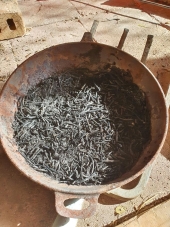
 4
4




Check out Redhawk's soil series: https://permies.com/wiki/redhawk-soil
 13
13




 3
3




Check out Redhawk's soil series: https://permies.com/wiki/redhawk-soil

 8
8




- Tim's Homestead Journal - Purchase a copy of Building a Better World in Your Backyard - Purchase 6 Decks of Permaculture Cards -
- Purchase 12x Decks of Permaculture Cards - Purchase a copy of the SKIP Book - Purchase 12x copies of Building a Better World in your Backyard
 5
5




 3
3




Where my chicks have roamed no grass grows!
 2
2




 4
4




 5
5




Where my chicks have roamed no grass grows!
 5
5




Zone 6, 45 inches precipitation, hard clay soil




 4
4




Shookeli Riggs wrote:
Im not sure if you can overload the char but i know it doesnt take water very well,in fact i believe it repels water for a long time because it floats.Someone correct me if i wrong on this because im just going on what i see.
Check out Redhawk's soil series: https://permies.com/wiki/redhawk-soil

|
We should throw him a surprise party. It will cheer him up. We can use this tiny ad:
The new kickstarter is now live!
https://www.kickstarter.com/projects/paulwheaton/garden-cards
|




